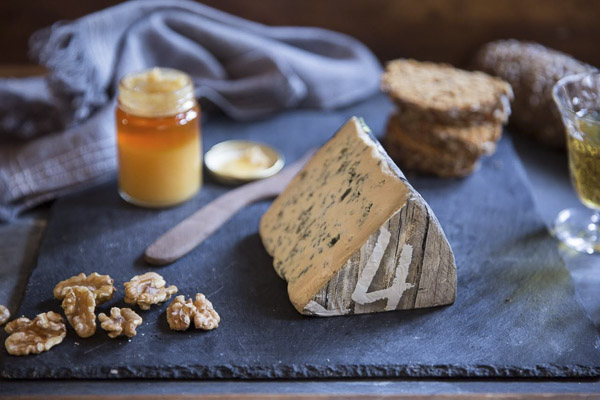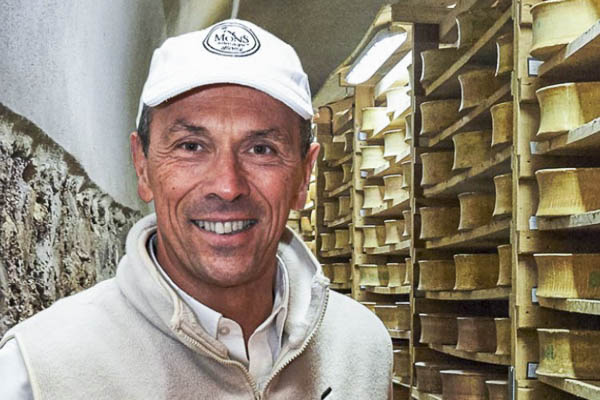My high-school French teacher introduced me to Roquefort, and I remember that she served it with butter. Purists will wince but the butter softened the bite, and it helped my teenage palate enjoy the experience. I still think it’s a good trick for a blue that’s too strong. But you won’t want butter with Bleu 1924. This luscious new French blue tastes like it has butter in it.
François Kerautret is a cheese marketer, not a cheesemaker, but the idea for this cheese hit him about five years ago. “What if Roquefort and Stilton had a baby?” fantasized Kerautret, an executive for Peterson, a Seattle-area importer. That would be like a hookup between a Capulet and a Montague (Roquefort is from French sheep’s milk; Stilton from English cow’s milk), but Kerautret knew that Roquefort-area farmers used to make mixed-milk wheels before Roquefort received its appellation d’origine, which dictated sheep’s milk exclusively. That appellation, by the way, was the first for a cheese. The year? 1925.
Hervé Mons
For three years, Kerautret nagged his friend Hervé Mons, the esteemed French affineur, to help him. Finally, a couple of years ago, Mons agreed to do a prototype and was pleased enough with the outcome to get serious. The approximately six-pound wheels are made by a blue-cheese specialist in the Auvergne, using roughly equal parts pasteurized sheep’s and cow’s milk.
The creamery pierces the wheels when they’re about two weeks old—the step that kicks the blue mold into gear—then ships them to Mons’s caves near Roanne for expert aging. Over the next two to three months, they develop a thin natural rind, like Stilton, and the internal veining. By the time they arrive at American cheese counters, they are probably four to five months old, Kerautret estimates.
And what magic happens during that maturation! The ivory paste becomes creamy, as spreadable as butter, with aromas of saltine crackers, toasted walnuts, malted barley and buttered toast. At peak ripeness, the cheese resembles Stilton more than Roquefort—more buttery than pungent, although the richness and tang of the sheep’s milk are there. Do taste before you buy; in three or four samplings, I’ve encountered one overly pungent wheel.
Although Kerautret and Mons intended Bleu 1924 for the U.S. market, Mons liked it enough to put it in his shops in France, where it has become a top seller. Why “1924” for a cheese that debuted six months ago? “So people will ask,” admits Kerautret. Then he can tell them the story of the Roquefort appellation and how this style of mixed-milk cheese predates it.
Such a sumptuous cheese needs a luscious Sauternes-type dessert wine or a nutty oloroso sherry or Madeira. Beer fans, try an imperial porter or stout with some sweetness.
Bleu 1924 is well priced (about $23 a pound) and availability should grow. In California, look for it at Market Hall Foods (Berkeley and Oakland); Cheese Addiction (Huntington Beach); DTLA and MilkFarm (Los Angeles); Cheese Shop @ The Mix (Orange County); Venissimo (San Diego area); and Cheese Plus (San Francisco). In the Pacific Northwest: The Cheesemonger’s Table (Edmonds, WA); Bale’s Thriftway (Lake Oswego, OR); Cheese Bar and World Foods (Portland); and Market of Choice (multiple locations). Whole Foods nationwide have access to the cheese but not every location carries it.
March Class: Northern California All-Stars
Monday, March 13
5:30 p.m. to 7:30 p.m.
Silverado Cooking School, Napa
Discover what the most talented local cheesemakers are up to in this sit-down guided tasting. We’ll sample several of the best new arrivals plus a favorite classic or two. There’s a reason cheesemakers everywhere look to Northern California for inspiration. We’ll drink local, too.



